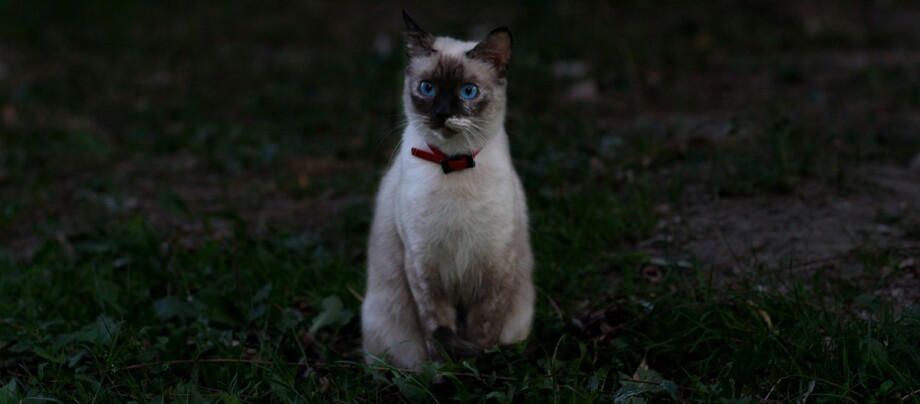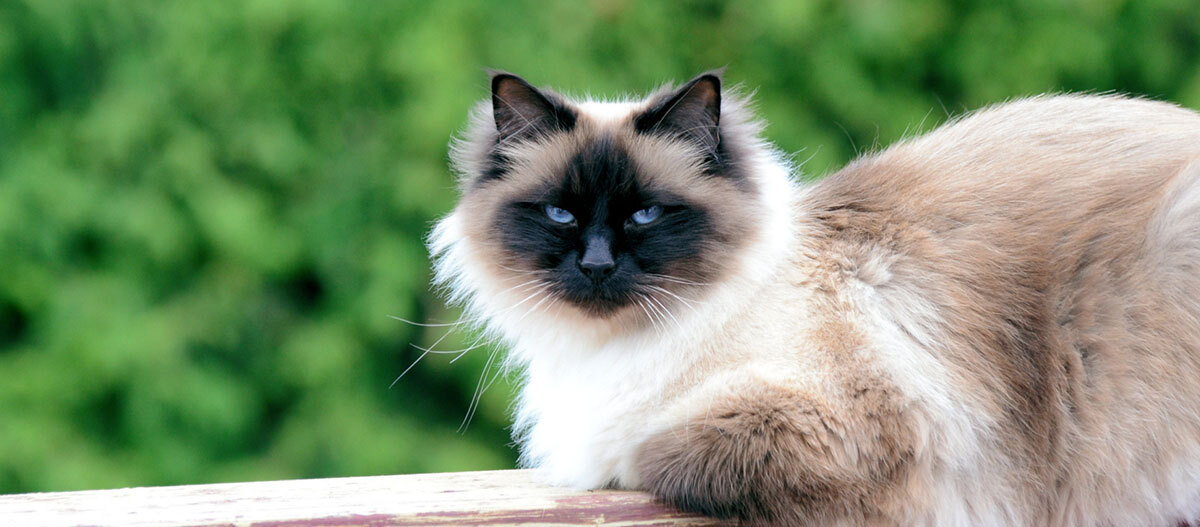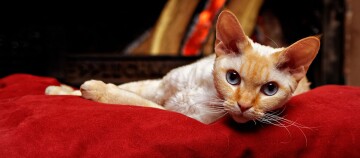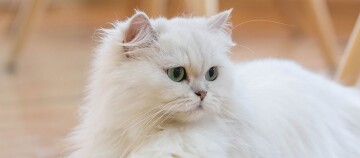Sacred Cat of Burma – Beautiful and Strongly Devoted to Its Human
01.01.2024 - Reading time: 3 minutes

If you are looking for an elegant and affectionate feline, the Sacred Cat of Burma may be just the right pet for you. It is beautiful and strongly devoted to its human companions. As legend has it, the breed traces its origins to a white temple cat that kept a dying high priest company. At the moment of his death, the Sacred Cat of Burma is said to have taken on the appearance so venerable today: Its eyes turned blue, its head, tail and legs golden brown and paws white.
NewsletterSacred Cat of Burma
Breed | Sacred Cat of Burma, also known as Birman or Birman cat |
Origin | France |
Size | medium-sized, approx. 50 centimetres head-torso length |
Weight | Female cat 3.5 to 4 kilograms, male 4.5 to 6 kilograms |
Physique | strong hindquarters |
head shape | broad-roundish, shaped like an obtuse triangle |
Eyes | bright blue |
Coat and colour | semi-long to longhaired, short in the face, turning into a ruff from the cheeks onwards; little undercoat, silky; all point colours are recognised, the tabby and tortie markings are currently establishing themselves |
Coat care | regular brushing necessary |
Special features | white paws |
Nature | gentle, affectionate and playful, fond of children and often eager to learn |
Sacred Cat of Burma: Nature
The cats differ in character from the majority of their conspecifics: quite untypical of their species, they attach great importance to pleasing their humans. This makes them the ideal pet for cat lovers who do not want to put up with the self-will of house cats. Birman are easy to train and particularly well-behaved – typical cat mischief rarely occurs to them. But this does not mean that these cats are passive or even boring. They like to have their nose where there is something to discover, follow their human like a shadow and are fond of playtime with moving objects. Their lovable character makes the Sacred Cat of Burma the ideal family cat. It also gets along well with children or other pets such as sociable dogs.
Sacred Cat of Burma: Keeping and Care
The care of the Sacred Cat of Burma is relatively simple. The coat of the Sacred Cat of Burma should be brushed at least twice a week, with the prominent ruff being particularly in need of care. As the Sacred Cat of Burma has little undercoat, the risk of matting is low, but brushing contributes to their well-being and encourages bonding with their humans. The tail of the Sacred Cat of Burma is feathery and does not require extra grooming.
The Sacred Cat of Burma is an excellent indoor cat. If you are working, the Birman cat should have other cats for company, because it does not feel comfortable as a single cat. The Sacred Cat of Burma needs a lot of attention from its human, but is also very cooperative. It is easy to train and responds curiously to clicker training. Free roaming is only recommended to a limited extent: Due to its trustfulness towards strangers, the Sacred Cat of Burma can easily put itself in danger.
Sacred Cat of Burma: Colours
The spectrum of colours of the Birman cat is wide. The Sacred Cat of Burma comes in the various point colours such as Cream, Red, Lilac and Seal. Tabby and tortie markings have recently become popular in European breeding lines. Common to all Birmans are the strikingly bright blue eyes and the white paws, the symmetry of which is an important criterion for breeding evaluation. On the hind feet these markings should end in pointed “spurs”.

History of the Sacred Cat of Burma (Birman)
The systematic breeding of the Birman cat started in France at the beginning of the 20th century, the recognition as a breed took place there in 1925. In Europe, the breeding of the breed probably goes back to crosses of Siamese and/or Persian cats with cats imported from Burma. In fact, the Sacred Cat of Burma visually resembles a mixture of Persian and Siamese. In the 1930s, breeding also flourished in Germany, but was interrupted throughout Europe by the war. It was not until 1955 that the breeding population in France stabilised again. Today, the breeding of the Birman cat is secure.
Video: “All about the Sacred Cat of Burma”
Breed report: Sacred Cat of Burma
Gentle, playful, people-oriented - the Sacred Cat of Burma is not only a wonderful, but also beautiful cat breed. In this breed portrait you will learn everything about the origin, the special appearance, the character and the attitude of the Sacred Cat of Burma. And do you know who the most famous Sacred Cat of Burma is? One click and you will find out more ... Meow!





